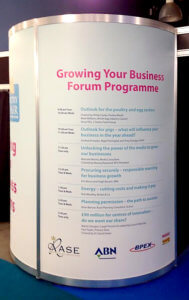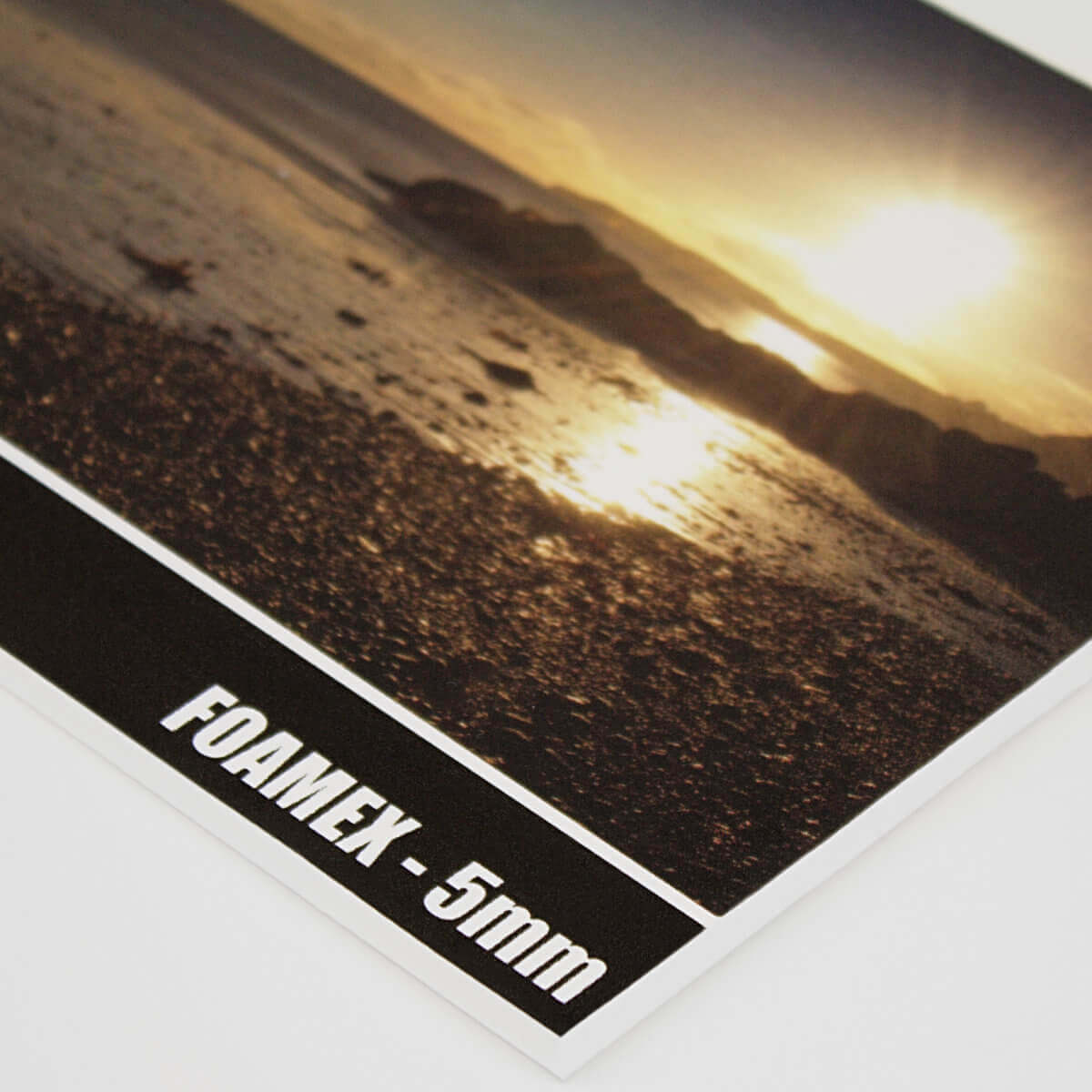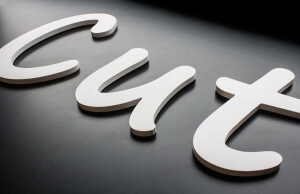It’s important to choose the correct foamex thickness for the job at hand. But how do you know what’s right?
Let me talk you through the most common uses of the standard foamex thicknesses that are available.
Available foamex thicknesses
The most readily available thicknesses of foamex are 3mm, 5mm and 10mm. Let’s talk about each in turn.
3mm foamex
3mm foamex is, unsurprisingly, the lightest of the three thicknesses. Because it uses less plastic for an equivalent area, it is also the cheapest.
The downside of this is that it is structurally the weakest. 3mm foamex can’t support itself even at small sizes. For this reason, 3mm foamex signs or graphics must be fixed flush to a solid, supporting structure, such as a wall or backboard. It’s too flimsy even to fix to slatted railings or fences.
However, because it is quite flexible, it can easily be bent around a curve, and indeed, there are certain display stands that are designed to take a printed foamex graphic around a curve.

One of the most common uses of 3mm foamex is as cladding for exhibition shell schemes. The low profile recesses nicely between the vertical aluminium struts that support the shell scheme frame and the low weight means they can easily be fixed to the walls with velcro (most exhibitions don’t allow you to fix to shell scheme walls any other way).
5mm foamex
5mm foamex is the most popular choice. It’s a great compromise between value, weight and rigidity.
It’s a bit heavier than 3mm foamex, but it’s also quite a bit more rigid. This means it can be fixed to slatted backings, such as railings, fences or weatherboard (although large sizes may still require a bit more support).
If the overall size of the graphic isn’t too large, it can even free-stand if supported at the bottom, such as with one of our Wedge Display Stands.
10mm foamex
10mm foamex is really quite heavy, but it’s as tough as can be!
To be honest, for most applications we would recommend dibond as a better compromise between weight and durability, but 10mm foamex has a few things going for it.
Firstly, dibond can be bent. And once it’s bent it’s very hard to get it back flat. 10mm foamex on the other hand, doesn’t bend. If enough force is applied it can snap, but it takes some considerable force for this to happen.
Secondly, 10mm foamex is really chunky! This might be more suitable for the look you’re going for (dibond is only 3mm thick) but it might also be necessary if you’re fixing the graphic into a display unit – especially if it has to free-stand.
Because it’s really chunky, it also makes for really prominent flat cut lettering.
Contour cutting
All foamex thicknesses can be contour cut on our CNC machine. 3mm and 5mm can be cut with a blade attachment. 10mm foamex needs to be cut with a router bit.
This means we can contour cut shaped graphics for free-standing (standees) or make flat cut lettering as required.




Leave a Reply